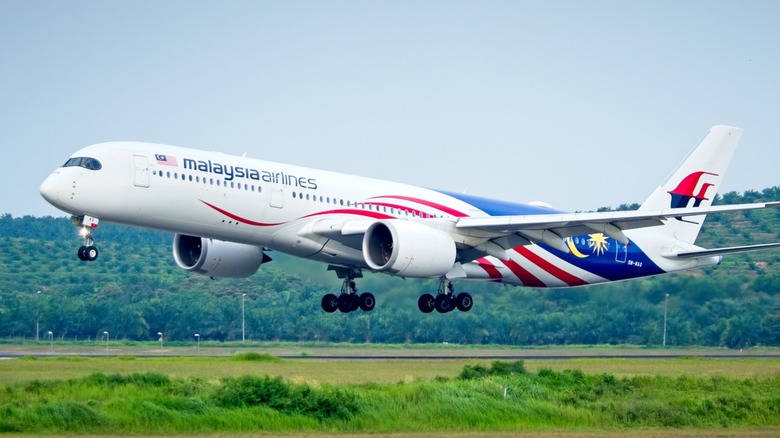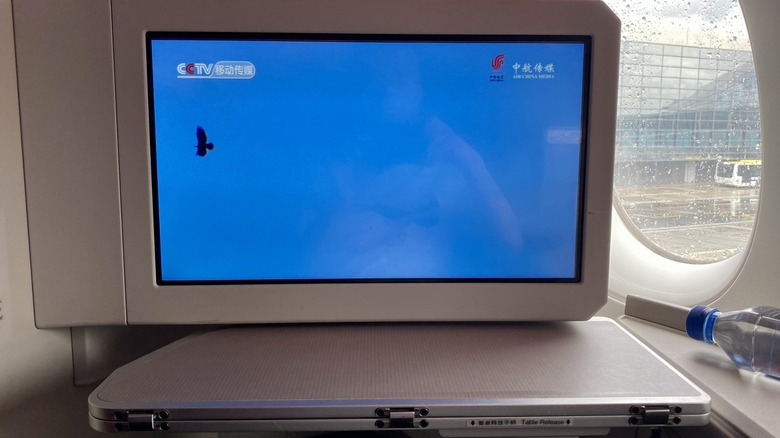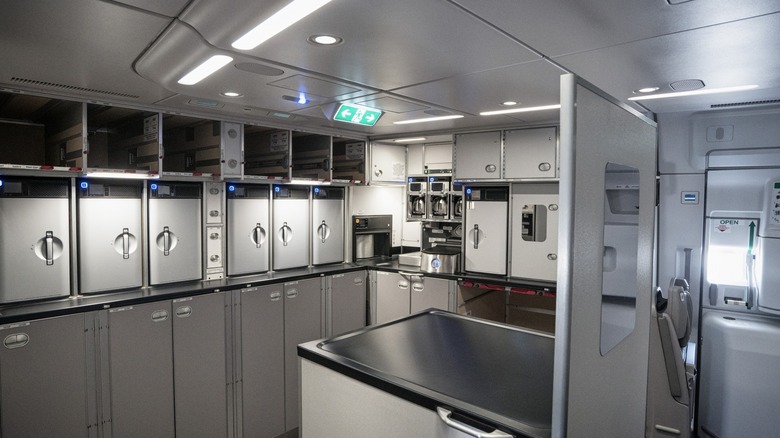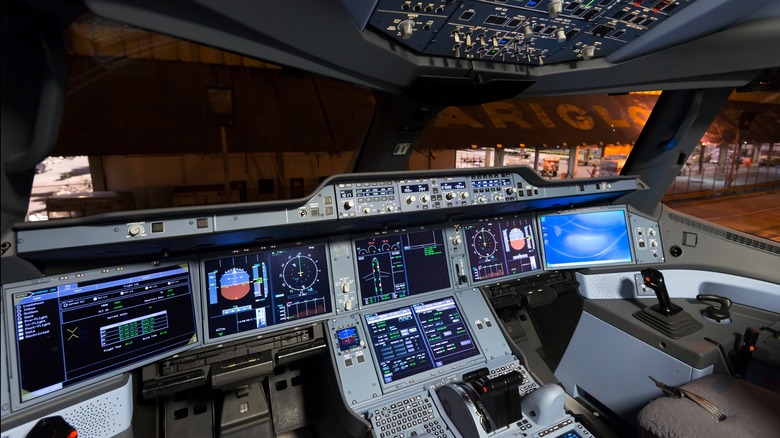
alphonsusjimos/Shutterstock
Over the past decade, there have been numerous monumental developments in the airline industry. Among them is the release and rollout of the Airbus A350. This widebody jet was built to combat the likes of the almighty Boeing 777 and it certainly came out swinging with a host of modern technology that not only propels Airbus as a brand toward the future but will do so for the aviation industry as a whole. When a company sets a new standard, competitors are undoubtedly going to take notice and take action to match that development.
Whether you’re riding passenger or flying, the Airbus A350 is regarded as one of the best planes for long flights for a host of reasons. From overall construction and efficiency to onboard technology and creature comforts, the A350 is where you want to be if you’re in the air for an extended amount of time. Let’s take a look at the reasons from both inside the cabin and inside the cockpit.
Creature comforts and heightened passenger experience
Zhao Liu/Getty
The A350 is constructed largely from composite materials. With over 70% of its construction consisting of these materials alongside titanium and modern aluminum alloys, the A350’s fuselage is extremely robust. This allows more cabin pressurization for an optimum internal “altitude” of 6,000 feet. This means that regardless of the aircraft’s actual altitude, the cabin pressure matches that of a 6,000-foot elevation. This helps alleviate fatigue and combats the effects of jet lag.
In addition, the A350 provides the quietest interior experience of any widebody aircraft. Obviously, having a quieter and more serene ride is monumentally beneficial on a flight, especially if it’s a long haul. With the A350’s service range of over 9,700 nautical miles, peace and quiet is invaluable. Who wouldn’t like a nice quiet 18-hour ride from Singapore to New York?
Best of all, despite having only two engines, the A350 is remarkably quick. The only commercial aircraft that can match its speed is the Boeing 747, so longer distances take less time. Combining all of these elements with the A350’s modern in-flight technology, connectivity, and entertainment makes those long-haul trips just a bit more pleasant. In this case, a little really does go a long way.
The crew and airline executives benefit, too
Bloomberg/Getty
The lightweight composite construction of the A350 is largely responsible for its impressively high cruising speed. Reduced weight means reduced effort from turbine engines, and that also leads to better fuel efficiency. It’s 25 percent more efficient than most previous-generation aircraft, in fact. The bonus efficiency of the A350 compared to other widebody aircraft means that it is not only capable of longer flights but capable of executing pre-existing routes with less fuel consumption, thus reducing overall operation costs. As you can probably imagine, the effect on the bottom line is appealing to airline executives.
Crew members of the A350 also benefit from its interior creature comforts — even more so than passengers, in some cases. The interior features comfortable crew rest areas as well as smart galleys designed to streamline and simplify the flight attendants’ work. Of course, a quieter and faster ride has a net positive effect on crew members just as much as it does for passengers.
Long-haul luxury in the cockpit
Thiago B Trevisan/Shutterstock
The pilot and co-pilot get a bit of a bump in amenities with the A350; this includes a fold-out table, head-up display, and, on more recent models, touchscreen operation. The A350 has rear-view cameras that help pilots when taxing around runways. They’re also available for passengers on in-seat screens, which is a fun little bonus. Finally, the A350’s relatively light weight and aerodynamics allow for it to make graceful and serene low-speed landing approaches. When that long journey comes to an end, everyone onboard can expect a smooth landing to complement their quiet, comfortable, and quick ride. What more could you ask for on a long flight?
After landing, the A350’s onboard airport navigation function instantly loads a map of the airport on the primary navigation display. Even at the most complicated airport’s crowded and confusing taxiway, pilots can quickly and easily navigate. This aids in quicker gate arrival and offboarding, making for a less stressful flying experience and even decreasing the chances of a delay. With all of these amenities and features, it’s easy to see why folks hold the A350 in such high regard for long flights.
>>> Read full article>>>
Copyright for syndicated content belongs to the linked Source : SlashGear – https://www.slashgear.com/1487055/why-the-airbus-a350-jet-best-for-long-flights/


































